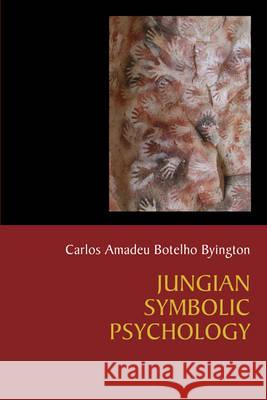Jungian Symbolic Psychology: The Voyage of Humanization of the Cosmos in Search of Enlightenment » książka
Jungian Symbolic Psychology: The Voyage of Humanization of the Cosmos in Search of Enlightenment
ISBN-13: 9781888602494 / Angielski / Miękka / 2012 / 352 str.
Jungian Symbolic Psychology: The Voyage of Humanization of the Cosmos in Search of Enlightenment
ISBN-13: 9781888602494 / Angielski / Miękka / 2012 / 352 str.
(netto: 99,57 VAT: 5%)
Najniższa cena z 30 dni: 100,41 zł
ok. 13-18 dni roboczych.
Darmowa dostawa!
In Jungian symbolic psychology, the concept of symbol is extended to encompass the entire individual and collective psyche. Structuring symbols, complexes, and functions are expressed as polarities that include both the subjective and objective worlds. Consciousness is described as the interaction of five archetypal forms of intelligence. Among them, Byington introduces alterity, in which the anima and animus archetypes relate dialectically, making it the archetype of democracy, of scientific and artistic creativity, and of love. Through this dialectic of opposites, analytical psychology and psychoanalysis are analyzed as complementary approaches and used to explicate shadow formation through fixation and defenses. In this manner, ethics can be studied psychodynamically, and the shadow can be equated with sin and evil within the individuation process. Through this ample symbolic perspective, the psyche is conceived as being (following Heidegger), with its three main polarities--mind-body, mind-nature, and mind-emotions--expressed through symbols. The matriarchal and patriarchal archetypes, along with the alterity and totality archetypes, form the ruling archetypal quaternio, which is the basis of symbolic elaboration to form the ego and consciousness. Parallel to Jung's individuation process, Byington has conceived the cultural Self and the humanization process based on Teilhard de Chardin to describe an archetypal theory of history. This theory includes the activation of the alterity archetype, whose mythological root is expressed through the myth of Christ in the West and the myth of Buddha in the East. Jungian Symbolic Psychology concludes with an interpretation of the Oedipus myth based on the dialectical relationship between analytical psychology and psychoanalysis.
In Jungian symbolic psychology, the concept of symbol is extended to encompass the entire individual and collective psyche. Structuring symbols, complexes, and functions are expressed as polarities that include both the subjective and objective worlds.Consciousness is described as the interaction of five archetypal forms of intelligence. Among them, Carlos Amadeu Botelho Byington, M.D., introduces alterity, in which the anima and animus archetypes relate dialectically, making it the archetype of democracy, of scientific and artistic creativity, and of love.Through this dialectic of opposites, analytical psychology and psychoanalysis are analyzed as complementary approaches and used to explicate shadow formation through fixation and defenses. In this manner, ethics can be studied psychodynamically, and the shadow can be equated with sin and evil within the individuation process. Through this ample symbolic perspective, the psyche is conceived as being (following Heidegger), with its three main polarities—mind–body, mind–nature, and mind–emotions—expressed through symbols.The matriarchal and patriarchal archetypes, along with the alterity and totality archetypes, form the ruling archetypal quaternio, which is the basis of symbolic elaboration to form the ego and consciousness.Parallel to Jung’s individuation process, Byington has conceived the cultural Self and the humanization process based on Teilhard de Chardin to describe an archetypal theory of history. This theory includes the activation of the alterity archetype, whose mythological root is expressed through the myth of Christ in the West and the myth of Buddha in the East.Jungian Symbolic Psychology concludes with an interpretation of the Oedipus myth based on the dialectical relationship between analytical psychology and psychoanalysis.Carlos Amadeu Botelho Byington, M.D., is a psychiatrist and Jungian analyst, graduated at the C.G. Jung Institute in Zürich and founding member of the Brazilian Society for Analytical Psychology. He is the author of numerous books, including Jungian Symbolic Education; The Development of Personality; Structure of Personality: Persona and Shadow; Symbolic Dimensions of Personality, as well as many articles.











